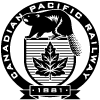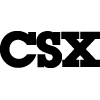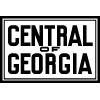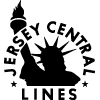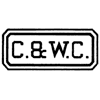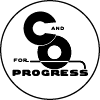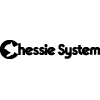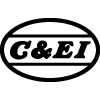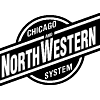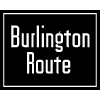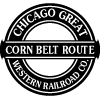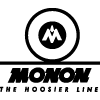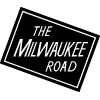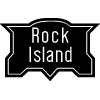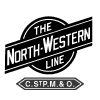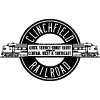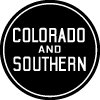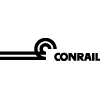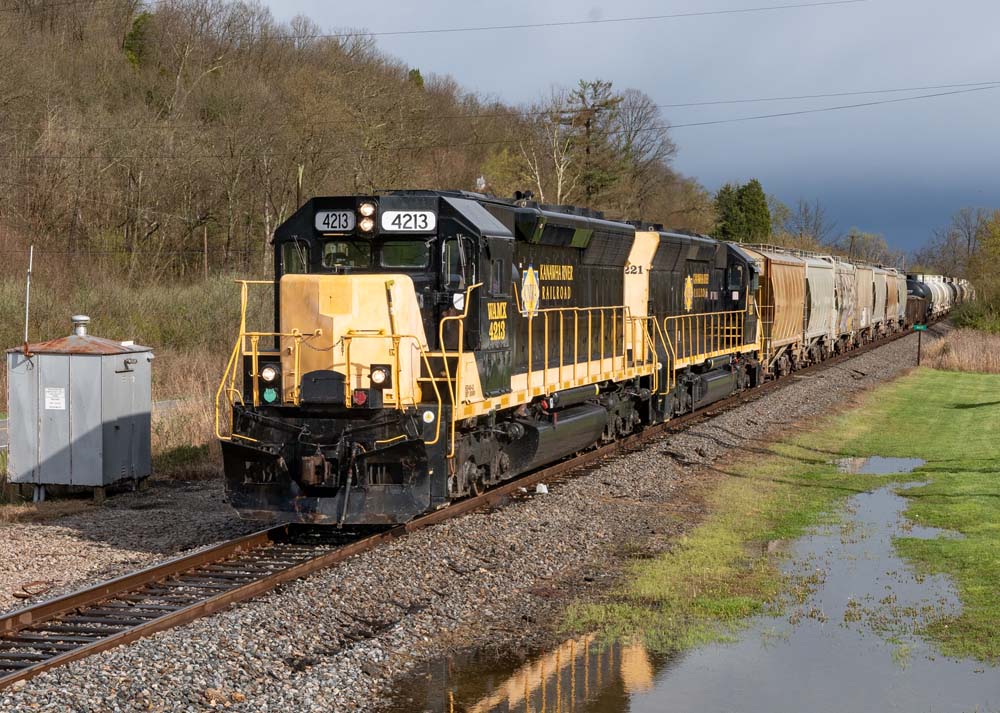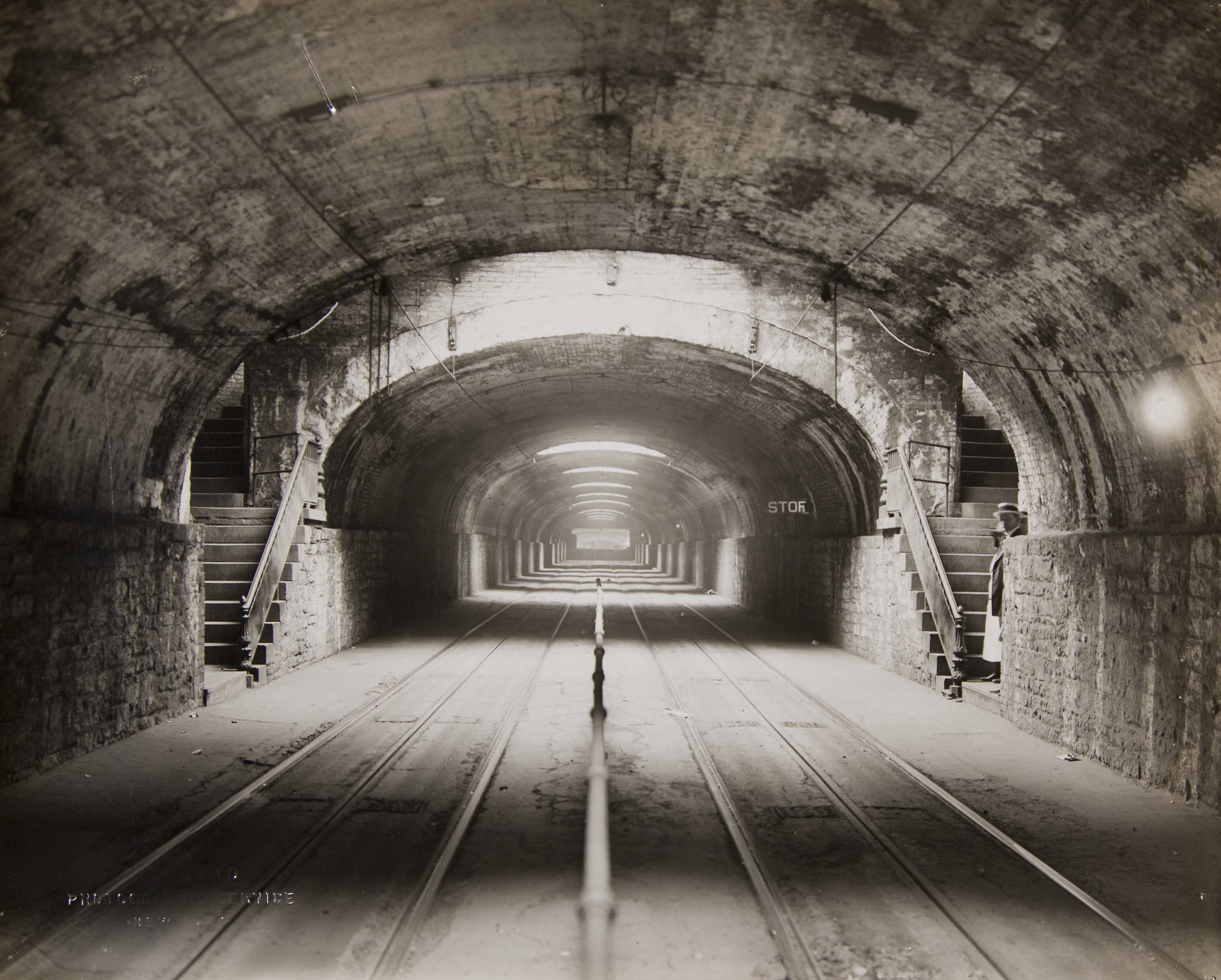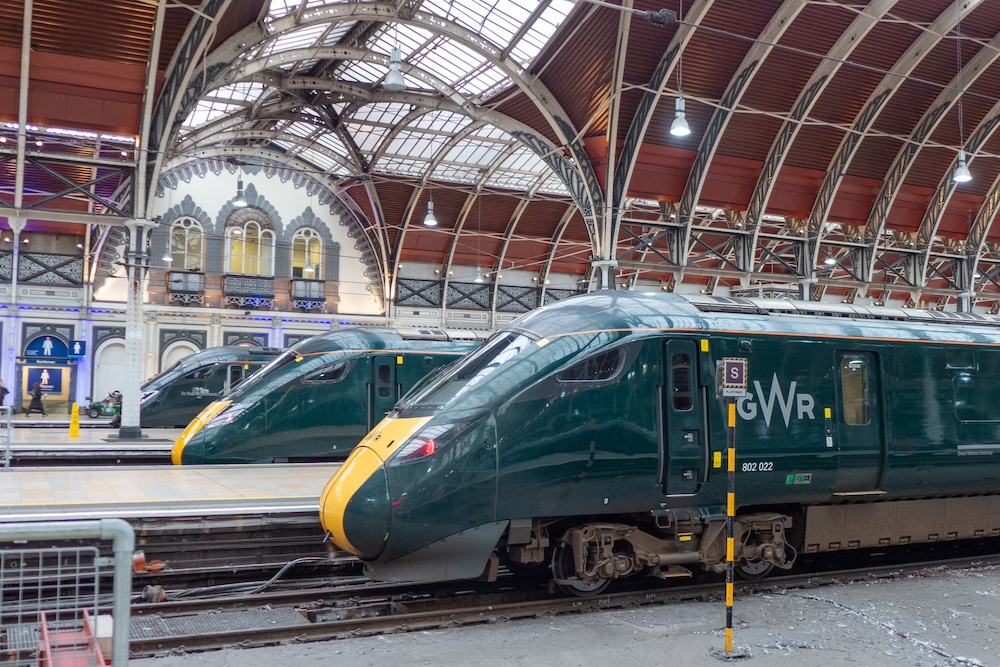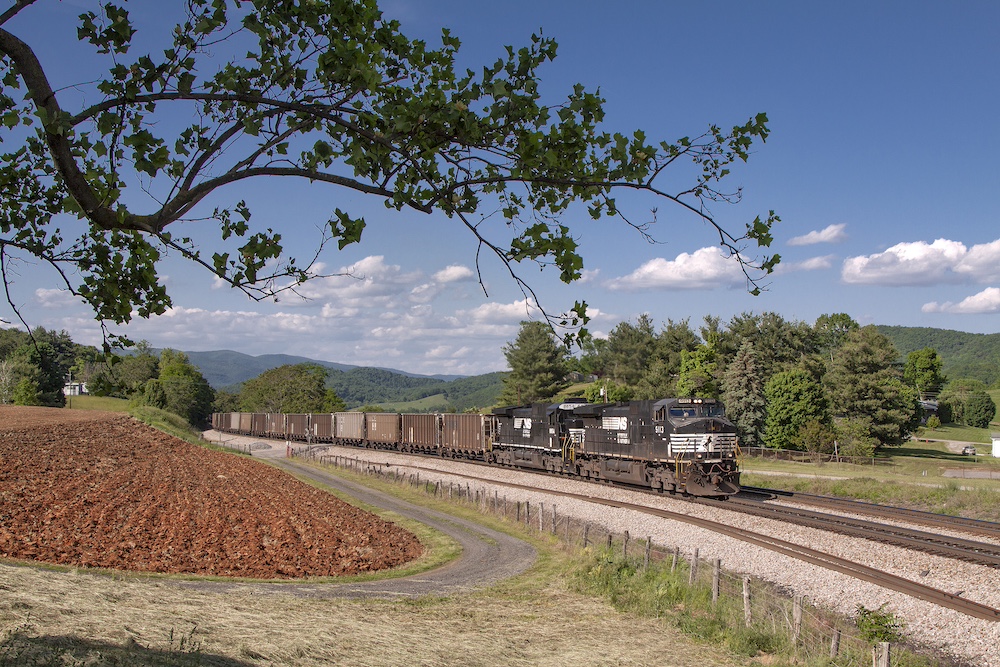Canadian National Railways was incorporated June 6, 1919, to operate several carriers that had come under governmental control owing to financial problems: Intercolonial (1913); National Transcontinental (1915); Canadian Northern (1918); Grand Trunk Pacific (1920); and Grand Trunk (1920). The Grand Trunk name survived on the U.S. portion of the Montreal-Portland (Maine) line until sold in 1989 to new carrier, St. Lawrence & Atlantic. Railroads absorbed after 1920 by CN include Newfoundland Railway (1949) and Northern Alberta (1981), a 1929 creation owned half by CN and Canadian Pacific until 1980, when CP sold its share to CN. The Canadian government privatized CN on November 17, 1995, in a C$2.2 billion initial public offering.
Canadian Pacific, like its American counterpart Union Pacific, has the “right” name, one that endures, though CP is younger, having been incorporated in 1881 to build from near North Bay, Ontario, to the Pacific Coast at what is now Vancouver, B.C. Post-World War II subsidiaries that maintained some identity included Esquimalt & Nanaimo on Vancouver Island; Quebec Central; Dominion Atlantic; and Toronto, Hamilton & Buffalo (half owned by New York Central). After CP obtained full ownership of Soo Line, CP began downsizing, shedding mainly prairie branch lines and lines east of central Ontario. The label “CP Rail,” was in use for nearly two decades while the company was an arm of Canadian Pacific Ltd. Later renamed Canadian Pacific Railway, the rail subsidiary was spun off in 2001 as an independent company, retaining its historic name and beaver logo.
CSX Corporation was formed on November 1, 1980. Subsidiary CSX Transportation absorbed Seaboard System Railroad on July 1, 1986, and Chesapeake & Ohio, the only corporate survivor of the Chessie System Railroads, on August 31, 1987.
Construction began from Savannah as Central Rail Road & Banking Company of Georgia in December 1835. Controlled by Illinois Central 1909-48, and by Frisco 1956-61. Became a subsidiary of Southern Railway on June 17, 1963, and merged into Southern Railway system on June 1, 1971.
Elizabethtown & Somerville opened from Elizabethport to Elizabeth, N.J., in 1836 as a horse-drawn railroad. Somerville & Easton incorporated in 1847 and bought the E&S in 1849 and adopted the name Central Railroad Company of New Jersey. Philadelphia & Reading controlled CNJ 1883-87. CNJ entered bankruptcy March 22, 1967, and was among the properties conveyed to Conrail on April 1, 1976.
Opened in 1849 as Vermont Central. Reorganized in 1889 as Central Vermont with Canada’s Grand Trunk as majority stockholder. Control passed to Canadian National in 1923. CN sold CV to RailTex Corp. in February 1995, which renamed it New England Central. RailAmerica bought RailTex in 2000.
Charleston & Western Carolina was built by the Georgia Railroad & Banking Co. as the Port Royal & Augusta. Control passed to Central of Georgia in 1881, to the state of South Carolina in 1894, and to Atlantic Coast Line in 1897. Merged into ACL on December 31, 1959.
Chesapeake & Ohio was created in the 1868 consolidation of the Virginia Central, whose ancestors dated to 1836, and the Covington & Ohio, chartered in 1853. C&O acquired control of the Hocking Valley in Ohio in 1911, and of Baltimore & Ohio in 1962. C&O became a subsidiary of the new Chessie System entity on June 17, 1973.
Chessie System was incorporated on February 26, 1973 and became the parent of Baltimore & Ohio, Chesapeake & Ohio, and Western Maryland on June 15, 1973. Chessie System and SCL Industries, parent of Seaboard Coast Line, merged to form CSX Corporation on November 1, 1980. (B&O took over WM on May 1, 1983, and C&O took over B&O on April 30, 1987, becoming, for corporate purposes, the only Chessie System railroad. CSX Transportation merged C&O on August 31, 1987.)
Evansville & Illinois chartered in 1849 to build north from the Ohio River. System completed from Chicago south in 1872, sold at foreclosure in 1877 as Chicago & Eastern Illinois. Missouri Pacific began merger discussions in 1959. After MP, Louisville & Nashville, and Illinois Central each petitioned the ICC for C&EI control, it ruled in 1963 for MP, stipulating that MP sell L&N the Evansville line, which occurred in 1969. L&N also bought a half-interest in the line from Woodland Jct., Ill., where the ownership split, into Chicago. Missouri Pacific merged C&EI on October 15, 1976. Union Pacific absorbed MP on December 22, 1982, and absorbed operations but didn’t formally merge MP out of existence until 1997.
Galena & Chicago Union, Chicago’s first railroad, began construction in 1848. In 1855 the Chicago, St. Paul & Fond du Lac was organized to extend northwestward from near Chicago. CStP&F was reorganized in 1859 as Chicago & North Western, which in 1864 consolidated with Galena & Chicago Union. C&NW became employee-owned in 1970. After years of operating affiliation on its main line with Union Pacific but no UP control, all C&NW stock was acquired by UP on April 27, 1995, and UP merged C&NW on June 23 of that year.
Aurora Branch chartered February 12, 1849; renamed Chicago, Burlington & Quincy on February 14, 1855. Control acquired by Great Northern and Northern Pacific in 1901. Absorbed in March 1, 1970 Burlington Northern merger, along with Great Northern; Northern Pacific; and Spokane, Portland & Seattle.
The second of five major Illinois Central Gulf spinoffs. In December 1985, Chicago, Central & Pacific was essentially the old IC Iowa Division. IC in the 1960’s had dropped usage of long-time green diamond emblem in favor of a “split-rail I,” so CC&P acquired rights to the old logo. IC, seeking to broaden its traffic base, in June 1996 repurchased CC&P and made it a subsidiary.
Construction began at St. Paul, Minn. southward in September 1884 under A.B. Stickney. Reorganized as the Chicago Great Western in 1892. System essentially completed through acquisitions of other lines to Chicago, Omaha, and Kansas City by 1903. Merged into Chicago & North Western on July 1, 1968.
New Albany & Salem chartered in 1847 and opened in southern Indiana in 1851. Reorganized as Louisville, New Albany & Chicago in 1873. System formed an “X” crossing at Monon, Ind., and slogan “Monon Route” (pronounced MOE-non) was first used in 1882. Reorganized as Chicago, Indianapolis & Louisville in 1897. Name changed to Monon Railroad on January 10, 1956. Acquired by Louisville & Nashville on July 31, 1971.
Milwaukee & Waukesha Rail Road chartered in 1847, opened in 1850 as Milwaukee & Mississippi. Milwaukee & St. Paul, an 1863 reorganization of the 1858 La Crosse & Milwaukee, in 1872 acquired the St Paul & Chicago. In 1873 it built from Milwaukee to Chicago and added “Chicago” to its name to become CM&StP. Between 1905-09 it built the Pacific Extension to Seattle and Tacoma. After a 1925 bankruptcy, it emerged in 1928 as Chicago, Milwaukee, St. Paul & Pacific. Bankrupt again in 1977, it shed the Pacific extension and other lines in 1980-83, then was courted by Chicago & North Western, Grand Trunk Western, and Soo Line, and was awarded to Soo in February 1985. Soo Line merged the Milwaukee Road on January 1, 1986.
Construction began on the Chicago & Rock Island in 1851; renamed Chicago, Rock Island & Pacific in an 1866 reorganization that included the Mississippi & Missouri across Iowa. In 1964, Union Pacific applied to merge CRI&P; the Interstate Commerce Commission took a decade to approve it, with a condition that Southern Pacific purchase the southern half. By then RI had deteriorated and UP and SP no longer wanted it. RI declared bankruptcy in 1975; after a labor strike, it ceased operation on March 31, 1980. The vast majority of RI’s 7000 miles wound up being acquired by other carriers; among the largest chunks were 965 miles to SP’s Cotton Belt; 750 to Chicago & North Western; 750 to regional Kyle Railroad; 645 to a subsidiary of the former Katy (now part of UP); and 550 Iowa Railroad, succeeded by today’s regional Iowa Interstate.
What came to be known as the “Omaha Road” began as the Tomah & Lake St. Croix in Wisconsin on April 1, 1863. After expansions and consolidations it acquired the name Chicago, St. Paul, Minneapolis & Omaha on May 25, 1880. Controlled by Chicago & North Western after 1882 and operated as a part of C&NW system, comprising the lines north of Elroy, Wis., and Omaha to Minneapolis-St. Paul and Ashland, Wis. The corporation lasted until 1957, and its official identity was maintained until 1972.
South & Western Railroad incorporated in 1905, renamed Carolina, Clinchfield & Ohio in 1908. Leased jointly by Atlantic Coast Line and Louisville & Nashville in 1924, who named the operating organization, an unincorporated entity, the Clinchfield Railroad Company. Creation of Seaboard System Railroad on December 29, 1982, rendered the separate Clinchfield entity unnecessary.
Colorado Central opened a standard-gauge line from Denver in 1870. Several predecessors, including Fort Worth & Denver City, consolidated as Colorado & Southern in 1898; two-thirds control of C&S-FW&DC acquired by CB&Q in 1908. FW&DC drops “City” in 1951 to become Fort Worth & Denver. C&S officially merged into Burlington Northern in 1981; FW&D merged into BN in 1982.
After the failure of Penn Central in 1970, the government formed the United States Railway Association in 1973 to develop a plan to save railroading in the Northeast. The result: Consolidated Rail Corp., which on April 1, 1976, took over the properties of PC and six smaller roads. On August 22, 1998, Norfolk Southern and CSX purchased 58% and 42% percent of Conrail stock, respectively, dividing the railroad between them. Each owner began operating their portion on June 1, 1999. In three jointly-owned “shared asset” areas, Conrail still exists as a local freight provider.






